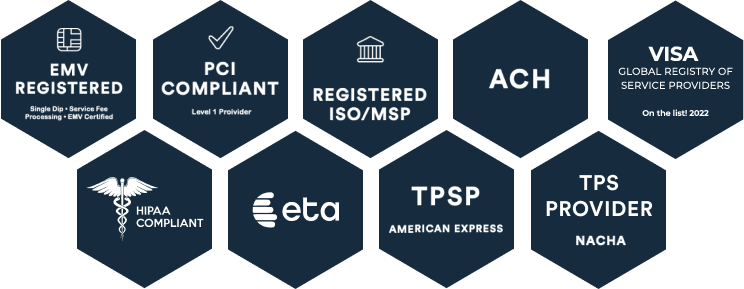Just as most businesses must prioritize a streamlined payment process for customers, it’s critical for government agencies, departments etc. But what most teams miss is that a disconnected payment process can hurt everyone at the organization, not just your customer or citizen experience. Internal chaos creates challenges for everyone on the team. And the impact waterfalls from employee to employee—from treasurers to budget and finance teams to comptrollers.
What does a disconnected payment process look like?
Oftentimes, it’s easy to spot a disconnected payment process by looking for a few key pain points:
- A lack of continuity across payment channels
- A slow payment process
- Costly processing fees for multiple systems
- Reliability issues between platforms
When payment systems and payment processes aren’t married together, your team misses out on synergy and more work and problems are created.
Here’s how a disconnected payment process impacts the three main finance teams at your organization:
Treasurers
Treasurers can waste precious time in reconciliation work. Managing the accuracy of multiple systems, especially systems that aren’t connected, can be costly. This is especially true when treasurers are forced to track down payments or transactions for a weekly or monthly reconciliation—and even more costly when they need to find the same information for audits or any type of legal compliance process.
When financial systems aren’t automated or connected to standard procedures, treasurers find themselves spending more time on menial tasks and less time on more strategic work for the agency.
Budget & Finance Teams
Typical budget and finance teams can find themselves lost in the endless cycle of manual data updates. Pulling reports, assisting in reconciliation efforts, and managing budgets are all tasks that take longer when payment processes aren’t integrated. Plus, as these team members try to see everything from big-picture goals to granular details, disconnected systems make it difficult to get complete transparency.
Allocation accuracy becomes challenging, costs are high, and like treasurers, budget and finance teams end up wasting more time on tasks that should be connected and automated instead of on forward-thinking, modernization goals for the agency. Add in the risk for compliance and these team members are in a constant state of chaos to make sure everything is up-to-date and compliant.
Comptrollers
While comptrollers are typically tasked with improving revenue flow, increasing collections, and even enabling better reporting, they can be overloaded when internal payment systems are separate.
Manual data entry makes a comptroller’s job even more difficult, can increase liability for compliance issues, and even open up opportunities for error. Plus, when payment systems are disconnected, improper handling of PCI can become a larger issue, putting the agency at risk.
Integrated Payments Centralize Billing and Accelerate Revenue
An integrated payment system can solve the challenges and pain points of a disconnected payment process. When you connect and integrate your payment solutions, you centralize billing and even accelerate revenue. And with this synergy, you can reduce friction throughout the entire process—from payment request to customer or citizen transaction to reconciliation and reporting.
Here’s how:
Leverage Automation to Decrease Error
Automation is the future of all financial activities. And for good reason. When finance teams leverage automation, they decrease the risk of human error. Manual entry is discarded, reporting becomes clearer, and team members’ time is freed up for more important tasks.
What does this mean for your team? Because two in every five manual data entries typically contain an error, your team won’t just save time when you reduce manual data entry tasks. Your team will save the time they’ve spent correcting those mistakes, too.
Top-Level Security
Cyber security threats are growing every year, especially for government agencies. Even with advancements in cloud storage, payment safety, and consumer education, cyber attacks are still a very real possibility and often a reality for many organizations. But when you select an integrated payments solution that offers the highest security standards in the industry and the highest-level of PCI compliance, you can rest assured that security breaches and data theft are concerns of the past.
What does this mean for your team? Instead of cleaning up the mess of a cyber attack or worrying about the possibility of a breach into one of your multiple, disconnected systems, your finance teams can get to work on big-picture tasks, financial analysis, and finding ways to save the agency or department money.
Speed Up Billing Processes
Just as accepting payments should align with modern consumer expectations—online and often on a mobile device—the entire billing process should be focused on convenience and speed. Payment requests, payment reminders, and payment receipts should all be sent to the consumer digitally. For most consumers, these interactions are preferred over text.
What does this mean for your team? When you offer a faster billing process by communicating in the channels consumers prefer—more often than not that means texting—you’re creating an opportunity to accelerate the entire payment process. Teams spend less time tracking down payments, sending reminders, and following up with other team members for rogue transactions.
Offer Flexible Payment Solutions
Modern consumers expect modern payment solutions, and those solutions are often flexible. With a connected payment process, your department or agency can offer mobile payments, text-2-pay options, and other online payment collection experiences. These flexible payment solutions should be connected to consumer channels that make collecting payments easy—text, your website, and even in-person options.
What does this mean for your team? When consumers have flexible payment options, they’re more likely to pay on time. And when those payment options are connected to your back-office systems, they’re automatically reconciled, connected to the right reports, and compliant with laws and regulations.
Takeaways
1. A connected payment process saves everyone on your team time.
When your finance team spends time logging into separate platforms or duplicating information from one system to another, precious time (and taxpayer money) is wasted. A connected process streamlines everything from the frontend to the backend—saving everyone time.
2. An integrated payments solution will help you centralize billing efforts, collect payments faster, and accelerate revenue.
When your payment process is fully integrated with a robust payments solution, your team doesn’t just save time, they can collect payments faster and accelerate revenue. Automated payment reminders free up time for more strategic work and payments requested in consumer-driven channels are more likely to be paid.
3. Automation and security should be top of mind when you’re searching for an integrated payments solutions.
Saving time, increasing revenue, and staying compliant should always be the top priorities for a government agency. Taxpayer money is precious, making every solution purchase an opportunity to spend wisely and increase efficiency. For government agencies, reducing risk of cyber threats, maintaining compliance with local and federal regulations, and adding automation where possible can help your team serve your community better.






